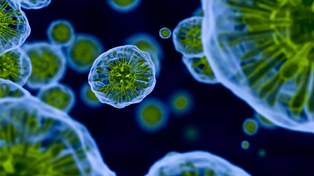Highlights
- •RhoA and actomyosin are pulsatile in the migrating primordium
- •RhoA puncta form at the base and tip of primordium cell protrusions
- •Pulses of actomyosin regulate the cycle of cell protrusion extension and retraction
- •RhoA-mediated actin flow propels the primordium forward
Summary
In animals, cells often move as collectives to shape organs, close wounds, or—in the case of disease—metastasize. To accomplish this, cells need to generate force to propel themselves forward. The motility of singly migrating cells is driven largely by an interplay between Rho GTPase signaling and the actin network. Whether cells migrating as collectives use the same machinery for motility is unclear. Using the zebrafish posterior lateral line primordium as a model for collective cell migration, we find that active RhoA and myosin II cluster on the basal sides of the primordium cells and are required for primordium motility. Positive and negative feedbacks cause RhoA and myosin II activities to pulse. These pulses of RhoA signaling stimulate actin polymerization at the tip of the protrusions and myosin-II-dependent actin flow and protrusion retraction at the base of the protrusions and deform the basement membrane underneath the migrating primordium. This suggests that RhoA-induced actin flow on the basal sides of the cells constitutes the motor that pulls the primordium forward, a scenario that likely underlies collective migration in other contexts.







